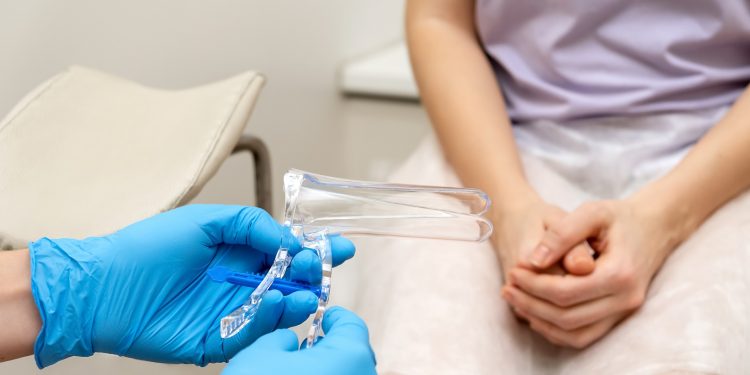What is Vaginal Flora
The vaginal flora refers to the collection of microorganisms that naturally reside within the vaginal environment. It consists of a diverse population of bacteria, yeasts, and other microorganisms that play a crucial role in maintaining vaginal health. The composition of vaginal flora can vary among individuals and is influenced by various factors such as age, hormonal changes, sexual activity, hygiene practices, and overall health.
The Vaginal Flora
The vaginal flora is primarily dominated by a group of bacteria known as lactobacilli. These beneficial bacteria help create an acidic environment within the vagina by producing lactic acid. This acidic pH serves as a protective barrier against harmful pathogens and helps maintain the balance of microorganisms in the vaginal ecosystem.
The presence of a healthy vaginal flora is essential for overall vaginal health and plays a crucial role in preventing infections and maintaining optimal reproductive health. It helps regulate the vaginal pH, prevents the overgrowth of harmful bacteria or yeast, and promotes a balanced vaginal environment.
Understanding the composition and function of vaginal flora is important because imbalances or disruptions in the vaginal ecosystem can lead to various vaginal health issues, including infections such as bacterial vaginosis, yeast infections, and urinary tract infections. Therefore, maintaining a healthy and balanced vaginal flora is crucial for women’s well-being.
Types of Bacteria in Vaginal Flora
The vaginal flora is primarily composed of various types of bacteria that play a crucial role in maintaining vaginal health. The dominant bacteria in the vaginal ecosystem are lactobacilli, particularly species from the Lactobacillus genus. These bacteria contribute to the acidic environment of the vagina by producing lactic acid, which helps maintain a balanced and healthy vaginal flora. However, there are other bacteria present in smaller quantities as well. Here are some of the common types of bacteria found in the vaginal flora:
- Lactobacillus Crispatus: This is one of the most common and beneficial types of lactobacilli in the vaginal flora. It produces hydrogen peroxide, which helps prevent the overgrowth of harmful bacteria and maintains a healthy vaginal pH.
- Lactobacillus Jensenii: Another important species of lactobacilli, Lactobacillus jensenii, contributes to the production of lactic acid, creating an acidic environment that inhibits the growth of pathogens.
- Lactobacillus Iners: Lactobacillus iners is a common bacterium found in the vaginal flora, although its role and effects on vaginal health are still being studied.
- Streptococcus Species: Some species of streptococci, such as Streptococcus agalactiae (Group B Streptococcus), can be part of the normal vaginal flora. However, excessive growth or colonization can lead to infections, especially in pregnant women.
- Escherichia Coli: Although typically associated with the gastrointestinal tract, Escherichia coli can occasionally be found in the vaginal flora. Excessive growth of E. coli in the vagina can lead to urinary tract infections.
Importance of Vaginal Flora for Health
The vaginal flora, consisting of various types of bacteria, plays a vital role in maintaining the health of the female reproductive system. The balance and diversity of these bacteria contribute to the overall well-being and functionality of the vagina. Here are some key reasons why the vaginal flora is important for health:
- Protection against Infections: The presence of beneficial bacteria, particularly lactobacilli, in the vaginal flora helps create an acidic environment by producing lactic acid. This acidity inhibits the growth of harmful bacteria, viruses, and fungi, reducing the risk of vaginal infections such as bacterial vaginosis, yeast infections, and sexually transmitted infections.
- Maintenance of Vaginal pH: The vaginal pH refers to the acidity or alkalinity level in the vagina. The normal vaginal pH is slightly acidic (around 3.5 to 4.5), which is conducive to the growth of beneficial bacteria and inhibits the growth of pathogens. The vaginal flora, through the production of lactic acid, helps maintain this acidic pH, creating an inhospitable environment for harmful microorganisms.
- Prevention of Overgrowth of Harmful Bacteria: The presence of lactobacilli in the vaginal flora helps keep the growth of harmful bacteria in check. Lactobacilli produce hydrogen peroxide, which has antibacterial properties and helps control the overgrowth of pathogens. This helps prevent conditions such as bacterial vaginosis, which is characterized by an imbalance in the vaginal flora.
- Support for Fertility and Reproduction: A healthy vaginal flora is important for fertility and successful reproduction. It creates a favorable environment for sperm survival and motility, facilitating fertilization. Additionally, a balanced vaginal flora during pregnancy is crucial for preventing complications such as preterm birth and certain infections that can affect both the mother and the baby.
Factors Influencing Vaginal Flora
The composition and balance of vaginal flora can be influenced by various factors. Understanding these factors is essential for maintaining a healthy vaginal environment. Here are some key factors that can influence the vaginal flora:
- Hormonal Changes: Hormonal fluctuations throughout a woman’s life can impact the vaginal flora. The levels of estrogen and progesterone, which vary during the menstrual cycle, pregnancy, and menopause, can affect the pH and moisture levels in the vagina. Changes in hormone levels can alter the composition of the vaginal flora, leading to an increased risk of infections or imbalances.
- Antibiotic Use: Antibiotics are prescribed to treat bacterial infections, but they can also disrupt the natural balance of bacteria in the vagina. Antibiotics not only target harmful bacteria but can also eliminate beneficial bacteria, such as lactobacilli, leading to an overgrowth of opportunistic pathogens. This can result in conditions like yeast infections or bacterial vaginosis.
- Sexual Activity: Sexual activity can introduce new bacteria into the vagina, potentially affecting the composition of the vaginal flora. The exchange of bacteria during sexual intercourse can disrupt the balance of the existing flora and increase the risk of infections. Proper hygiene practices before and after sexual activity, such as urinating and washing the genital area, can help minimize the impact on the vaginal flora.
- Personal Hygiene Practices: Excessive or improper personal hygiene practices can disrupt the natural balance of the vaginal flora. Harsh soaps, douches, scented products, and tight-fitting clothing can irritate the vagina and alter its pH, creating an environment conducive to the growth of harmful bacteria. It is important to use mild, unscented soaps and avoid douching to maintain a healthy vaginal flora.
- Medical Conditions and Treatments: Certain medical conditions and treatments can impact the vaginal flora. For example, conditions like diabetes or immune disorders can affect the body’s ability to maintain a balanced vaginal environment. Additionally, treatments like radiation therapy or chemotherapy can disrupt the vaginal flora due to their effects on cell growth and immune function.
Conclusion
The vaginal flora plays a crucial role in maintaining the health and well-being of the vagina. It consists of a diverse community of bacteria, primarily lactobacilli, which help maintain the vaginal pH, prevent the overgrowth of harmful pathogens, and provide protection against infections. Understanding the factors that influence the vaginal flora is essential for maintaining a healthy vaginal environment. Hormonal changes, antibiotic use, sexual activity, personal hygiene practices, diet and lifestyle, and medical conditions can all impact the composition and balance of the vaginal flora.
References - https://www.medicalnewstoday.com/articles/vaginal-flora - https://www.verywellhealth.com










Discussion about this post